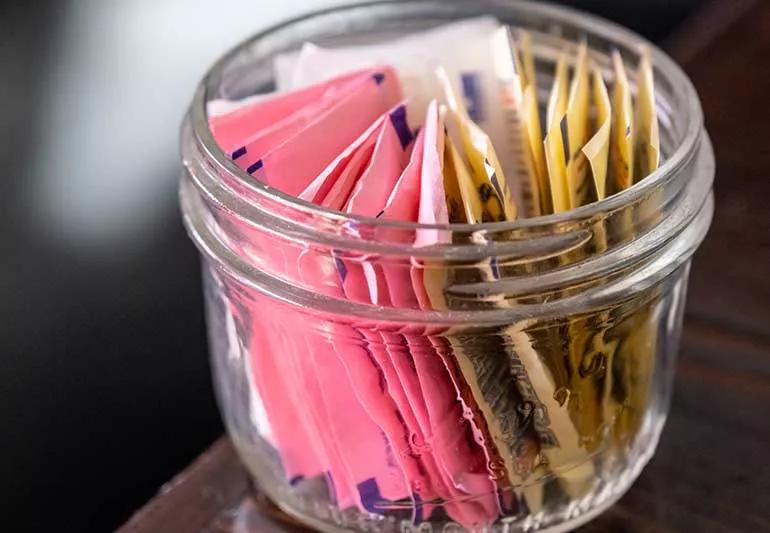How I Did It: A question about alcohol deaths in New Mexico became a multi-part investigation

Ted Alcorn
When journalist Ted Alcorn frequented an alcoholic beverages detox centre in Gallup, New Mexico, he had minor plan his reporting on the impression of liquor on his point out would develop into a multi-element, 21,000-phrases-and-developing series digging into why New Mexico citizens die from drinking at considerably higher prices than individuals in other states. Alcorn’s exceptional offer, Blind Drunk, was printed by New Mexico In Depth in July 2022. Alcorn is an AHCJ Well being Treatment Functionality fellow and coated this story as a part of the fellowship plan.
A reporter with credits at The New York Moments and other nationwide publications who also lectures at Columbia University’s Mailman College of General public Health and fitness and NYU’s Wagner University of General public Company, Alcorn shared with AHCJ how his undertaking arrived about and how he waded as a result of the monumental quantity of research that went into it.
This discussion has been edited for clarity and brevity.
What led you to begin functioning on this story, and did you have a perception of how considerably investigation and facts would be concerned?
I usually write for countrywide papers, but I also routinely lead reporting to the nonprofit investigative outlet New Mexico In Depth. An editor there questioned me if I would glimpse into the position liquor experienced performed in COVID-19 fatalities in the state. I had only completed a tiny digging when I figured out that New Mexico has by far and absent the greatest alcohol-linked death amount in the state, and that lots of of the frequently held perceptions about drinking’s harms in the condition — for case in point, that DWI is a leading component — are wrong. I pitched the concept of carrying out a multi-component sequence and then was lucky to be awarded a several grants to enable a for a longer period-time period undertaking. We realized it would be a 6- to nine-month project, but that however did not put together me for how laborious it would be to carry it to the finish line.
In which did you start out in seeking up the clinical research exploration you would in the end have to have for the story? Did you have a strategy for how to appear up experiments and guarantee you ended up getting ones that have been representative and/or that you weren’t inadvertently cherry-selecting reports?
As is common with my reporting, I attempt to receive key supply facts due to the fact I really do not want to depend on typical knowledge to come to my individual conclusions. This was no exception. I in the long run gathered and analyzed info from far more than a dozen local, point out, and federal companies. I also browse greatly in the scientific literature, possibly scientific studies that had been suggested by sources or that were cited in other functions or that arrived up organically in my lookups. I train graduate classes in general public wellness and have free academic obtain to the different scientific quotation databases, which can make this a little bit much easier for me.
When I reference research in the reporting, I normally lean on meta-analyses or other is effective that summarize the conclusions of a entire body of investigate alternatively than any one analyze. At times throughout my reporting, I would share experiments again with sources to get their opinions about them, particularly with customers of the alcoholic beverages field who could want a prospect to dispute some of the conclusions.
Did you have a technique for arranging the results so you could compare them and conveniently recall them when you needed them?
I annotate scientific tests as I assessment them utilizing a PDF reader, which will make it a lot easier to go back and pull key results. I also relabel and manage all the experiments I down load by yr, which I discover can make it less difficult for me to navigate again to research later when I have to have to overview them.
What did you uncover about the science on why disparities existed for liquor deaths amid Indigenous Americans, and how did you take care of the gaps in the proof?
There’s a extensive legacy of shoddy science and superficial reporting about Indigenous peoples’ material use. My mentor in graduate college, Allison Barlow, operates Johns Hopkins’s Heart for Indigenous Overall health, and I also sought other persons who have devoted their professions to this field, interviewed them, and questioned them to endorse studies to me. When I identified the experts divided — for example, on no matter whether Indigenous men and women have a genetic predisposition to alcohol dependence or illnesses (or regardless of whether the social determinants of overall health perform more of a job) — I would dialogue with scientists and ask them to critique 1 another’s observations.
I also talked to practitioners doing work in and all over the Navajo Nation, the focus of a person of my tales. I was specific about acknowledging the past missteps of experts and reporters, and I took care to stay in the boundaries of what I knew with certainty. You can read through a lot more about my method right here: Topics in wellness: classes from the industry – How I sought to stay away from the blunders of the previous in reporting on alcoholic beverages fatalities in New Mexico.”
How did you start off your investigation into policy, including scientific tests on alcoholic beverages taxes’ impression on ingesting and liquor-connected harms? How did you figure out which reports had been most dependable and useful in your reporting?
Via phrase searches in quotation databases, it was quite simple to discover evaluations of liquor taxes, and to select out the most prolific authors in the area. I read a lot of of the research and interviewed the key researchers. When industry produced an outlying examine that located taxes were not related with reductions in alcohol use amongst hefty drinkers, I requested the scientists for their thoughts, and they presented a powerful critique of that study’s techniques. Due to the fact no single research encapsulated the total, I referenced a quantity in my reporting.
Can you clarify what you realized about the change involving alcoholic beverages-induced and liquor-attributed deaths and what lessons lay in that distinction for other journalists?
Loss of life certificates penned by clinical examiners and coroners are amid our most effective documentation of alcohol’s harms, but while ingesting is an fundamental trigger of loss of life for several people, it isn’t constantly straightforward to distinguish that. ‘Alcohol-induced’ fatalities are people with a apparent and definitive hyperlink to liquor, and then the CDC uses a intricate formulation to estimate the number of added deaths — regardless of whether homicides and suicides or falls or cancers — wherever alcohol is known to participate in a role in some share. Like this team, the full toll of consuming is identified as ‘alcohol-attributable’ deaths. Whilst it’s more simple and far more definitive to refer to liquor-induced deaths, at situations I found it needed to refer to the much larger team of liquor-attributable fatalities, so I didn’t inadvertently undersell viewers on the gravity of the implications of extreme consuming.
What information would you give to other journalists who may well get started a similar venture?
Alcoholic beverages is amid the top causes of preventable death in the U.S., yet it receives extremely minimal notice from journalists. This poses a enormous untapped opportunity, regardless of whether your beat is health or protection or lifestyle or politics. New Mexico In Depth and I hosted a webinar for interested journalists on how to deal with this problem in their point out, and a recording is on the net. (See recording).








